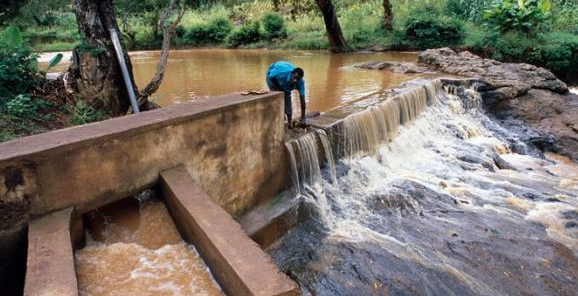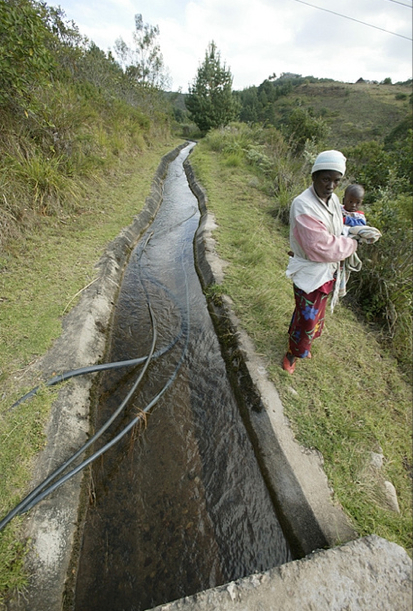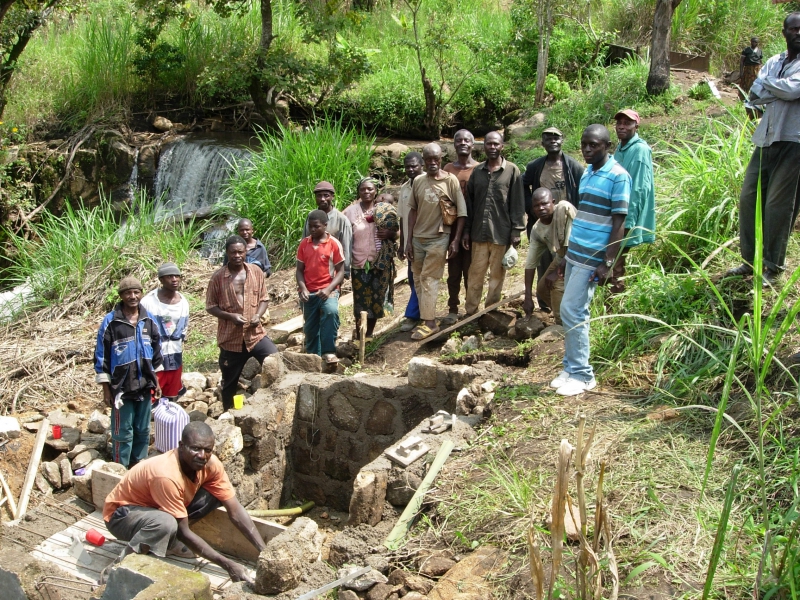Difference between revisions of "Water Portal / Rainwater Harvesting / Surface water / Micro hydropower"
(→Suitable conditions) |
(→Acknowledgements) |
||
| Line 56: | Line 56: | ||
* Smail Khennas and Andrew Barnett, [http://www.google.com/url?sa=t&rct=j&q=&esrc=s&source=web&cd=2&ved=0CCsQFjAB&url=http%3A%2F%2Fwww.afghaneic.org%2Frenewable%2F2%2520bestpractsynthe.pdf&ei=MqFGUNCkLoGGjAK0zoFI&usg=AFQjCNHv7vRNvwGz8U1059xu_tUdcJrbGw&sig2=INb3UZt_h-hDaV74TIoQvg BEST PRACTICES FOR SUSTAINABLE DEVELOPMENT OF MICRO HYDRO POWER IN DEVELOPING COUNTRIES], Department for International Development, UK. March 2000. | * Smail Khennas and Andrew Barnett, [http://www.google.com/url?sa=t&rct=j&q=&esrc=s&source=web&cd=2&ved=0CCsQFjAB&url=http%3A%2F%2Fwww.afghaneic.org%2Frenewable%2F2%2520bestpractsynthe.pdf&ei=MqFGUNCkLoGGjAK0zoFI&usg=AFQjCNHv7vRNvwGz8U1059xu_tUdcJrbGw&sig2=INb3UZt_h-hDaV74TIoQvg BEST PRACTICES FOR SUSTAINABLE DEVELOPMENT OF MICRO HYDRO POWER IN DEVELOPING COUNTRIES], Department for International Development, UK. March 2000. | ||
* [http://www.internationalrivers.org/resources/small-hydro-a-potential-bridge-for-africa%E2%80%99s-energy-divide-7649 Small Hydro a Potential Bridge for Africa’s Energy Divide.] International Rivers. August 23, 2012. | * [http://www.internationalrivers.org/resources/small-hydro-a-potential-bridge-for-africa%E2%80%99s-energy-divide-7649 Small Hydro a Potential Bridge for Africa’s Energy Divide.] International Rivers. August 23, 2012. | ||
| + | * [http://practicalaction.org/micro-hydro-power-3 Micro-hydro power]. Practical Action. | ||
Revision as of 02:08, 11 September 2012


Micro hydroelectric power is different from typical hydroelectric power because it doesn't attempt to significantly interfere with the flow of the river. Typically rated at a maximum capacity of 300 kW hours, the micro hydro systems don't dam rivers, but instead divert a stream of water that flows downhill through a pipeline dropping into the turbine. The turbine then generates electricity which can be stored in batteries and transported to where villagers may need it most.
Communities and hydropower Hydropower installations up to 300 kW of installed capacity are able to provide essential energy services to many rural areas in Africa, including mechanical power for services like maize grinding and electricity connections for individual households and small businesses. For most rural African communities, it could be many years until the grid comes near enough to their towns to be practical. But most rural Africans also live closer to a river than to the grid. What is needed is greater support for helping communities tap into their local power, especially technical help, financial assistance and guidance in how to operate and maintain the system. A microhydro plant, while relatively low cost and low tech, may still strain local resources. Although the costs of microhydro are very site specific, communities can help bring down the capital required by in-kind contributions specifically for the civil works required (diversion weir, intake, canal, etc.).
Contents
Suitable conditions
Unlike traditional power stations that use fossil fuels, micro-hydro generators have practically no effect on the environment. And because they don’t depend on dams to store and direct water, they’re also better for the environment than large-scale hydro-electric stations.
In fact, by reducing the need to cut down trees for firewood and increasing farming efficiency, micro-hydro has a positive effect on the local environment.
Looking specifically at small hydropower development, the following barriers can be identified:
- Policy and regulatory framework: Unclear or non-existent policies and regulations to govern the development of small hydropower. In some countries hydropower developments under a certain threshold are not regulated at all, while in other countries it might be part of a broader regulatory framework for rural electrification in general. Generic frameworks often lack clarity on a number of hydropower-specific issues such as access to water, ownership of water infrastructure, and the related issue associated payments to use this infrastructure.
- Financing: More than other sources of renewable energy, hydropower developments (even small ones) are faced with high up-front costs and low operations and maintenance costs, something most available financing models do not favor. Nearly all of the new developments on the continent are relying in one form or the other on donor financing. Development of alternative financing models, including tapping into alternative funding sources, is needed to facilitate small hydro developments.
- Capacity to plan, build and operate hydropower plants: National and regional knowledge and awareness on the potential of small hydro for rural electrification is missing or very minimal. This includes knowledge at political, government and regulatory entities, as well as knowledge on local production of parts and components.
- Data on hydro resources: Linked to the limited knowledge about the technology is the lack of proper resource data on water availability and flow on which hydro developments can be based.
Construction, operations and maintenance

Costs
The cost varies from approximately £1,200 to £4,000 per installed kW, when using appropriate technologies, which are much cheaper than using conventional approaches and technologies.
In the examples examined in the five countries, the capital cost of micro hydro plants, limited to shaft power, ranged from US$714 (Nepal, Zimbabwe) to US$1,233 (Mozambique). The average cost is US$965 per installed kW, which is in line with the figures quoted in some studies. The installed costs for electricity generation schemes are much higher. The installed cost per kW ranged from US$1,136 (Pucará, Peru) to US$5,630 (Pedro Ruiz, Peru) with an average installed cost of US$3,085.
An important observation is that the cost per installed kilowatt is higher than the figures usually cited in literature. This is partly due to the difficulty analysts have in establishing full costs on a genuinely comparative basis. A significant part of micro hydro costs can be met with difficult to value labour provided by the local community as ‘sweat equity’. Meaningful dollar values for local costs are difficult to establish when they are inflating and rapidly depreciating relative to hard currencies. In addition, there is little consistency in the definition of boundaries of the systems being compared, for instance, how much of the distribution cost, or house wiring, is included, how much of the cost of the civil works contribute to water management and irrigation, and so forth.
Field experiences
- There are approximately 130 MHP plants66 currently in operation in Sri Lanka. Most are less than 100 kW in capacity.
- The Tungu-Kabiri community hydro project.
In Tanzania
Church missions have been at the forefront with regard to installing microhydro systems. An example is the Matembwe village hydro scheme, which powers a vocational center run by a mission. The system has an installed capacity of 150 kW and supplies electricity for commercial uses and individual households in two villages located 5 km apart, with the bulk of the electricity being used at the vocational center. For the first few years, two village committees were responsible for managing the project. As the capacity of these committees was found to be insufficient, management was handed over to the Matembwe Village Co. Ltd., who manages the vocational training centre. The ownership of the scheme is shared by the Diocese, an NGO, the village authority and the District Authority. Since the inception of the hydro project, the national grid has reached the villages concerned and the villagers now have the choice between electricity from hydropower or from the grid, with most of them staying with the cheaper local hydropower option.
In India
India has an estimated SHP potential of about 15 000 MW. So far, from 495 SHP projects, an aggregate installed capacity of 1693 MW has been installed. Besides these, 170 SHP projects with an installed capacity of 479 MW are under implementation. The database for SHP projects created by the Ministry of Non-Conventional Energy Sources (MNES) now includes 4233 potential sites, with a total capacity of 10 324 MW.
Reference manuals, videos, and links
- The Rise of Micro-Hydro Projects in Africa.
- Video: Micro Hydro Turbines: The Expert.
- Small Scale Hydro: Here are some good references for planning, designing, and building a micro-hydro system. The first step is to carefully determine if you have a hydro resource that is worth developing -- some of the references cover how to do this in detail.
- Micro-Hydro Powers Rural Development in Cameroon.
- Can micro hydro boost economic development in rural Africa?
- S.D.B. Taylor and D. Upadhyay. Sustainable markets for small hydro in developing countries. Hydropower & Dams Issue Three, 2005. IT Power, UK.
Acknowledgements
- Smail Khennas and Andrew Barnett, BEST PRACTICES FOR SUSTAINABLE DEVELOPMENT OF MICRO HYDRO POWER IN DEVELOPING COUNTRIES, Department for International Development, UK. March 2000.
- Small Hydro a Potential Bridge for Africa’s Energy Divide. International Rivers. August 23, 2012.
- Micro-hydro power. Practical Action.

